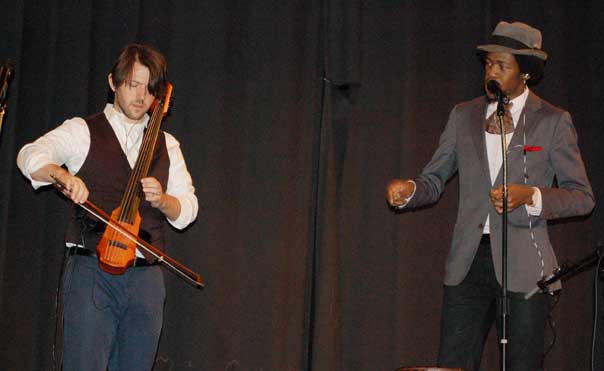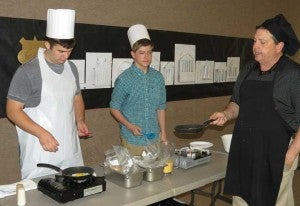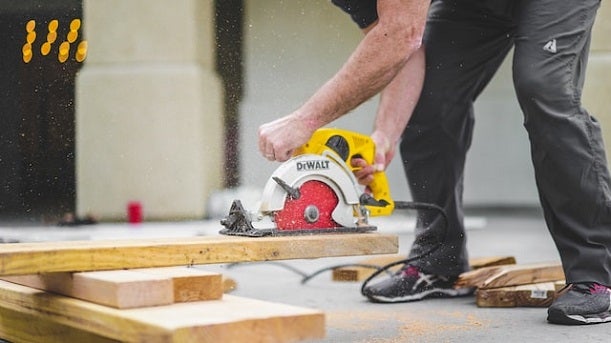Eclectic mix rocks Fuqua Assembly
Published 11:59 am Tuesday, April 12, 2016

- Christylez Bacon, right, using beatbox techniques, was accompanied by William “Wytold” Lebing in blending hip-hop, jazz and classical music to open Fuqua’s annual Arts Day.
A fusion of hip-hop, jazz, beatbox and classical music served as the opening tunes for Fuqua School’s annual Arts Day — a schoolwide event that highlights and involves students in various forms of art.
The assembly, held Thursday, featured Grammy-nominated progressive hip-hop artist Christylez Bacon and six-string electric cellist William “Wytold” Lebing.
“The idea of the assembly today was to bring in a group that blends together lots of different kinds of music,” said Fuqua Head of School John Melton, “but also different kinds of cultural components to their music to create an opportunity for kids in the area to have some exposure to a performance that they may not be able to go to on a regular basis.”
Bacon interacted with the students, using his beatbox technique, while Wytold played cello, accompanying Bacon.
Both told stories about how they got involved with their music and instruments.
According to Melton, Fuqua’s Arts Day is one where “the kids have an opportunity to choose between a variety of different workshops that are held during two different sessions. It covers all different manner of arts.”

In the Edible Egg workshop, John Ellington, right, director of operations and Fuqua Catering, demonstrates the skill of egg flipping to students Nicholas Davis, left, and Tucker Estes.
He said the school partnered with Hampden-Sydney College in hosting the event.
Home-school students were invited, along with those from New Life and Central Virginia Christian School.
“Growing up in the southeast part of Washington, D.C., my mom was raising me, my older brother and my little sister by herself,” Bacon told the students. “So, we didn’t have any disposable income to buy instruments … So, I had to get very creative about making music.”
The musician said he would “celebrate these sounds all the time, because I was the only one (who) could do them,” he said of beatbox sounds, using his mouth. “I could do these sounds waking up in the morning.”
“My mom played the cello (and) her mom played the cello,” Wytold said. “And I loved playing classical music, but I’m playing a very different kind of cello for you today (from) the one that I started on back in elementary school.”
On the radio, he’d hear guitar solos he wanted to play.
“And I wanted to figure out how … I (could) blend what I learned in strings class with what I heard on the radio. When I started playing guitar, I realized there are all these cool guitar techniques I never learned on the cello.”
“It was a day for students to create, collaborate and try something new,” said Band Director Camille Rabon. “Through exploring the arts, all of our students pre-K through 12th grade had hands-on workshops that fostered creativity and higher-level thinking. We offered a variety of workshops to appeal to the wide range of interests of our students. From technology, music, visual arts to martial arts, our students had a fun day.”
According to Melton, Arts Day supports the school’s existing arts program and is a “special day to celebrate many different forms of art. So, kids will be doing things from cooking … to making tye-dyes to painting.”
“The idea is to grow this out over time,” he said. “So, next year, we’re looking for more partners and potentially more venues.”
He said Wytold and Bacon “merge the contrasting roles of classical and hip-hop music in a collaborative musical program.”
“Traditional elements of hip-hop such as human beatbox, rhyming and storytelling are blended with classical compositions of composers like Bach, Vivaldi and Pachelbel,” a school document stated about the performance.
“Bacon demonstrates the amazing human beatbox and how it can interplay with the percussive and bowing techniques the electric cello. On-stage audio engineering enhances the layers of rhythmic and tonal complexity. By building cross-cultural connections, these presentations help students gain insight into the universality of artistic expression; call and response techniques encourage direct audience participation in the performance experience.”





